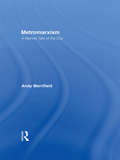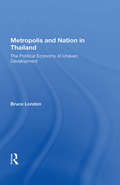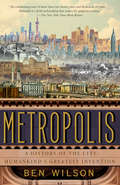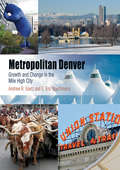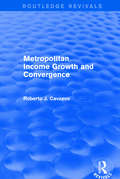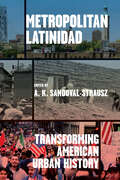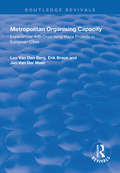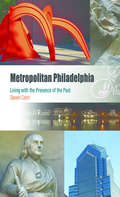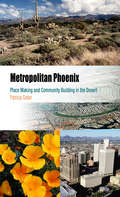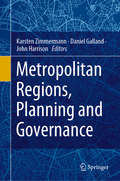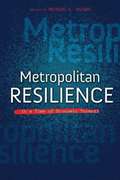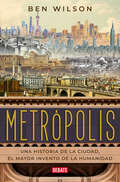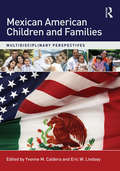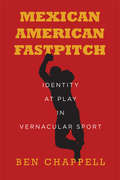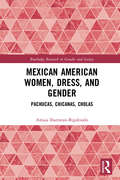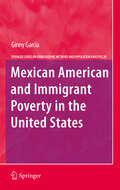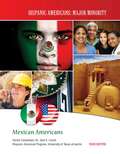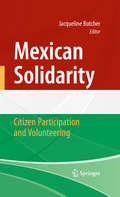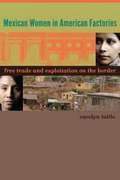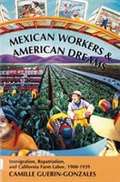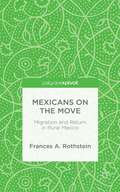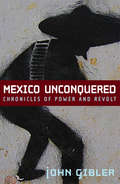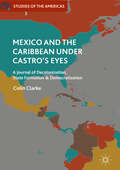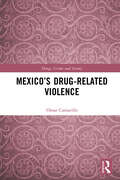- Table View
- List View
Metromarxism: A Marxist Tale of the City
by Andrew Merrifield"Metromarxism" discusses Marxism's relationship with the city from the 1850s to the present by way of biographical chapters on figures from the Marxist tradition, including Marx, Walter Benjamin, Guy Debord, and David Harvey. Each chapter combines interesting biographical anecdotes with an accessible analysis of each individual's contribution to an always-transforming Marxist theory of the city. He suggests that the interplay between the city as center of economic and social life and its potential for progressive change generated a major corpus of work. That work has been key in advancing progressive political and social transformations.
Metropolis And Nation In Thailand: The Political Economy Of Uneven Development
by Bruce LondonThis qualitative study of the relationships between one primate city, Bangkok, and its hinterland, the Thai nation, breaks new ground in general sociological theory, redirects the study of city-hinterland relationships, and presents an interpretation of Thai political history that departs significantly from conventional analyses. Professor London f
Metropolis: A History of the City, Humankind's Greatest Invention
by Ben WilsonIn a captivating tour of cities famous and forgotten, acclaimed historian Ben Wilson tells the glorious, millennia-spanning story how urban living sparked humankind's greatest innovations. &“A towering achievement.... Reading this book is like visiting an exhilarating city for the first time—dazzling.&” —The Wall Street JournalDuring the two hundred millennia of humanity&’s existence, nothing has shaped us more profoundly than the city. From their very beginnings, cities created such a flourishing of human endeavor—new professions, new forms of art, worship and trade—that they kick-started civilization. Guiding us through the centuries, Wilson reveals the innovations nurtured by the inimitable energy of human beings together: civics in the agora of Athens, global trade in ninth-century Baghdad, finance in the coffeehouses of London, domestic comforts in the heart of Amsterdam, peacocking in Belle Époque Paris. In the modern age, the skyscrapers of New York City inspired utopian visions of community design, while the trees of twenty-first-century Seattle and Shanghai point to a sustainable future in the age of climate change. Page-turning, irresistible, and rich with engrossing detail, Metropolis is a brilliant demonstration that the story of human civilization is the story of cities.
Metropolis: From the Division of Labor to Urban Form
by Allen J. ScottHere is an extensive and highly original inquiry into the origins, dynamics, and internal order of the modern metropolis. Allen J. Scott demonstrates how the metropolis emerges out of the basic mechanisms of production and work in contemporary society, and how those mechanisms guide general patterns of urban development. His work will be stimulating to social scientists and to planners and policy makers as well. This title is part of UC Press's Voices Revived program, which commemorates University of California Press’s mission to seek out and cultivate the brightest minds and give them voice, reach, and impact. Drawing on a backlist dating to 1893, Voices Revived makes high-quality, peer-reviewed scholarship accessible once again using print-on-demand technology. This title was originally published in 1988.
Metropolitan Denver: Growth and Change in the Mile High City (Metropolitan Portraits)
by Andrew R. Goetz E. Eric BoschmannNestled between the Rocky Mountains to the west and the High Plains to the east, Denver, Colorado, is nicknamed the Mile High City because its official elevation is exactly one mile above sea level. Over the past ten years, it has also been one of the country's fastest-growing metropolitan areas. In Denver's early days, its geographic proximity to the mineral-rich mountains attracted miners, and gold and silver booms and busts played a large role in its economic success. Today, its central location—between the west and east coasts and between major cities of the Midwest—makes it a key node for the distribution of goods and services as well as an optimal site for federal agencies and telecommunications companies.In Metropolitan Denver, Andrew R. Goetz and E. Eric Boschmann show how the city evolved from its origins as a mining town into a cosmopolitan metropolis. They chart the foundations of Denver's recent economic development—from mining and agriculture to energy, defense, and technology—and examine the challenges engendered by a postwar population explosion that led to increasing income inequality and rapid growth in the number of Latino residents. Highlighting the risks and rewards of regional collaboration in municipal governance, Goetz and Boschmann recount public works projects such as the construction of the Denver International Airport and explore the smart growth movement that shifted development from postwar low-density, automobile-based, suburban and exurban sprawl to higher-density, mixed use, transit-oriented urban centers.Because of its proximity to the mountains and generally sunny weather, Denver has a reputation as a very active, outdoor-oriented city and a desirable place to live and work. Metropolitan Denver reveals the purposeful civic decisions made regarding tourism, downtown urban revitalization, and cultural-led economic development that make the city a destination.
Metropolitan Income Growth and Convergence (Routledge Revivals Ser.)
by Roberto J. CavazosThis title was first published in 2001. What determines urban growth? Much has been written on particular causes and incidents which can explain the rise of one metropolis and the fall of another, but these do not illustrate general tendencies. This volume asks whether theories used to explain economic growth of nations or regions can be employed to find characteristics which encourage the growth of cities. Cavazos tests two principal theoretical approaches in this way. The first, the endogenous growth theory, predicts that incomes will diverge and sees technological innovations as the engine of economic growth. The second, the neoclassical growth theory, predicts conditional convergence and rates capital accumulation as the key to economic growth. He uses the two models to study US metropolitan income growth between 1970 and 1990 and compares their performance to determine which provides more insightful explanations of metropolitan growth.
Metropolitan Latinidad: Transforming American Urban History (Historical Studies of Urban America)
by A. K. Sandoval-StrauszA wide-ranging collection of essays that centers Latinos in the history of American cities and suburbs. Latino urban history has been underappreciated not only in its own right but for the centrality of its narratives to urban history as a field. A scholarly discipline that has long scrutinized economics, politics, and the built environment has too often framed race as literally Black and white. This has resulted in a fundamental misunderstanding of the full social canvas of American cities since at least the early twentieth century. Traversing metropolitan areas like Atlanta, Chicago, El Paso, Fort Worth, Los Angeles, Miami, and New York, this collection of essays brings together both established and emerging scholars, including long-time urbanists and academics working in the fields of Latino, borderlands, political, landscape, and religious history. Organized at different scales—including city, suburb, neighborhood, and hemisphere—this impressive body of work challenges long-standing narratives about metropolitan America. The contributors—Llana Barber, Mauricio Castro, Eduardo Contreras, Sandra I. Enríquez, Monika Gosin, Cecilia Sánchez Hill, Felipe Hinojosa, Michael Innis-Jiménez, Max Krochmal, Becky M. Nicolaides, Pedro A. Regalado, Iliana Yamileth Rodriguez, and Thomas J. Sugrue—engage a diverse range of subjects, such as urban rebellions, the suburbanization of Latinos, affordable housing, labor, the built environment, transnationalism, place-making, and religious life. The scholars also explore race within Latino communities, as well as the role that political and economic dynamics have played in creating Latino urban spaces. After reading this book, you will never see American cities the same way again.
Metropolitan Organising Capacity: Experiences with Organising Major Projects in European Cities (Routledge Revivals)
by Erik Braun Leo van Berg Jan van MeerPublished in 1997. The environment of cities has become increasingly competitive. Tradition location factors, that once tied economic activities firmly to particular areas have become less important. Increasingly the ability of a city to anticipate, respond to and cope with internal and external changes is getting attention. Organizing capacity of cities, or of metropolitan regions is becoming indispensible for sustainable economic and social development. The authors have carried out investigations into eight European cities to increase the insight into the practice of organizing capacity. The analysis of the development and implementation of 15 revitalization projects in these cities shows that organizing capacity calls for a new style of entrepreneurial urban management with public and private networking, leadership, long term strategies and organizing political and public support as key concepts.
Metropolitan Philadelphia
by Steven ConnAs America's fifth largest city and fourth largest metropolitan region, Philadelphia is tied to its surrounding counties and suburban neighborhoods. It is this vital relationship, suggests Steven Conn, that will make or break greater Philadelphia.The Philadelphia region has witnessed virtually every major political, economic, and social transformation of American life. Having once been an industrial giant, the region is now struggling to fashion a new identity in a postindustrial world. On the one hand, Center City has been transformed into a vibrant hub with its array of restaurants, shops, cultural venues, and restored public spaces. On the other, unchecked suburban sprawl has generated concerns over rising energy costs and loss of agriculture and open spaces. In the final analysis, the region will need a dynamic central city for its future, while the city will also need a healthy sustainable region for its long-term viability.Central to the identity of a twenty-first century Metropolitan Philadelphia, Conn argues, is the deep and complicated interplay of past and present. Looking at the region through the wide lens of its culture and history, Metropolitan Philadelphia moves seamlessly between past and present. Displaying a specialist's knowledge of the area as well as a deep personal connection to his subject, Conn examines the shifting meaning of the region's history, the utopian impulse behind its founding, the role of the region in creating the American middle class, the regional watershed, and the way art and cultural institutions have given shape to a resident identity.Impressionistic and beautifully written, Metropolitan Philadelphia will be of great interest to urbanists and at the same time accessible to the wider public intrigued in the rich history and cultural dynamics of this fascinating region. What emerges from the book is a wide-ranging understanding of what it means to say, "I'm from Philadelphia."
Metropolitan Phoenix
by Patricia GoberInhabitants of Phoenix tend to think small but live big. They feel connected to individual neighborhoods and communities but drive farther to get to work, feel the effects of the regional heat island, and depend in part for their water on snow packs in Wyoming. In Metropolitan Phoenix, Patricia Gober explores the efforts to build a sustainable desert city in the face of environmental uncertainty, rapid growth, and increasing social diversity.Metropolitan Phoenix chronicles the burgeoning of this desert community, including the audacious decisions that created a metropolis of 3.6 million people in a harsh and demanding physical setting. From the prehistoric Hohokam, who constructed a thousand miles of irrigation canals, to the Euro-American farmers, who converted the dryland river valley into an agricultural paradise at the end of the nineteenth century, Gober stresses the sense of beginning again and building anew that has been deeply embedded in wave after wave of human migration to the region. In the early twentieth century, the so-called health seekers--asthmatics, arthritis and tuberculosis sufferers--arrived with the hope of leading more vigorous lives in the warm desert climate, while the postwar period drew veterans and their families to the region to work in emerging electronics and defense industries. Most recently, a new generation of elderly, seeking "active retirement," has settled into planned retirement communities on the perimeter of the city.Metropolitan Phoenix also tackles the future of the city. The passage of a recent transportation initiative, efforts to create a biotechnology incubator, and growing publicity about water shortages and school funding have placed Phoenix at a crossroads, forcing its citizens to grapple with the issues of social equity, environmental quality, and economic security. Gober argues that given Phoenix's dramatic population growth and enormous capacity for change, it can become a prototype for twenty-first-century urbanization, reconnecting with its desert setting and building a multifaceted sense of identity that encompasses the entire metropolitan community.
Metropolitan Regions, Planning and Governance
by John Harrison Karsten Zimmermann Daniel GallandThe aim of this book is to investigate contemporary processes of metropolitan change and approaches to planning and governing metropolitan regions. To do so, it focuses on four central tenets of metropolitan change in terms of planning and governance: institutional approaches, policy mobilities, spatial imaginaries, and planning styles. The book’s main contribution lies in providing readers with a new conceptual and analytical framework for researching contemporary dynamics in metropolitan regions. It will chiefly benefit researchers and students in planning, urban studies, policy and governance studies, especially those interested in metropolitan regions.The relentless pace of urban change in globalization poses fundamental questions about how to best plan and govern 21st-century metropolitan regions. The problem for metropolitan regions—especially for those with policy and decision-making responsibilities—is a growing recognition that these spaces are typically reliant on inadequate urban-economic infrastructure and fragmented planning and governance arrangements. Moreover, as the demand for more ‘appropriate’—i.e., more flexible, networked and smart—forms of planning and governance increases, new expressions of territorial cooperation and conflict are emerging around issues and agendas of (de-)growth, infrastructure expansion, and the collective provision of services.
Metropolitan Resilience in a Time of Economic Turmoil
by Michael A. PaganoCities, counties, school districts and other local governments have suffered a long-lasting period of fiscal challenges since the beginning of the Great Recession. Metropolitan governments continue to adjust to the "new normal" of sharply lower property values, consumer sales, and personal income. Contributors to this volume include elected officials, academics, key people in city administrations, and other nationally recognized experts who discuss solutions to the urban problems created by the Great Recession. Metropolitan Resilience in a Time of Economic Turmoil looks at the capacity of local governments to mobilize resources efficiently and effectively, as well as the overall effects of the long-term economic downturn on quality of life. Introducing the reader to the fiscal effects of the Great Recession on cities, the book examines the initial fraying and subsequent mending of the social safety net, the opportunities for pursuing economic development strategies, the challenges of inter-jurisdictional cooperation, and the legacy costs of pension liabilities and infrastructure decay. Contributors are Phil Ashton, Raphael Bostic, Richard Feiock, Rachel A. Gordon, Rebecca Hendrick, Geoffrey J.D. Hewings, David Merriman, Richard Nathan, Michael A. Pagano, Breeze Richardson, Annette Steinacker, Nik Theodore, Rachel Weber, and Margaret Weir.
Metrópolis: Una historia de la ciudad, el mayor invento de la humanidad
by Ben WilsonEl fascinante relato de cómo las ciudades han sido, desde hace más de siete mil años, las impulsoras de las mayores transformaciones de la historia de la humanidad. En los doscientos milenios que la humanidad lleva de existencia, nada nos ha transformado con mayor profundidad que las ciudades, centros efervescentes de creatividad e innovación, impulsoras de los mayores avances de la historia. Aunque durante siglos solo las habitaba una pequeña minoría, el calor que irradian ha desencadenado la mayor parte de nuestras revoluciones políticas, sociales, comerciales, científicas y artísticas. Metrópolis es una historia global de cómo los centros urbanos han permitido el florecimiento de las grandes civilizaciones, y también el relato de cómo hemos llegado a ser quienes somos. Wilson lleva a los lectores en un viaje por las ciudades más importantes a través de más de siete mil años de historia para revelarnos las innovaciones impulsadas por cada una de ellas: desde los inicios de la educación cívica en Atenas hasta la ecorreinvención de Shanghái en el siglo XXI, pasando por los inicios del comercio global en el Bagdad del siglo IX, el papel de los cafés londinenses en el surgimiento de los mercados financieros, las comodidades domésticas en el corazón de Ámsterdam, el pavoneo parisino durante la Belle Époque, el impacto de la verticalidad en la ciudad de Nueva York o la expansión de Los Ángeles. Hoy la mitad de la población mundial vive en ciudades, y con el cosmopolitismo de las principales metrópolis del planeta bajo el ataque del nacionalismo y la hostilidad hacia la globalización, conocerlas se vuelve más importante que nunca, y es el punto de partida necesario para reimaginar el urbanismo del futuro, uno de los problemas más urgentes del siglo XXI. La crítica ha dicho:«Leer este libro es como visitar una de esas ciudades excitantes por primera vez: deslumbrante.»The Wall Street Journal «Un estimulante recorrido por más de dos docenas de ciudades y miles de años. Una empresa audaz que ofrece una lectura apasionante.»The New York Times Book Review «Fascinante y repleto de color. Nos hace comprender por qué preferimos las ciudades y por qué, pese a su lado oscuro, no parece que vayamos a abandonarlas pronto.»The Daily Telegraph «Un agudo recordatorio de que la metrópolis es vulnerable. Wilson sintetiza con brillantez las fuerzas que hacen que las ciudades bullan.»Financial Times «Amplio, entretenido y rico en detalles, su mérito radica en lograr la asmbrosa hazaña de estar a la altura de la inmensidad de su tema.»Literary Review «Una oda a las ciudades y a la vida cosmopolita. Metrópolis tiene la virtud añadida de que Wilson es un guía erudito y creativo.»TIME «Wilson, un guía turístico encantador y bien informado, llena su relato de misterios e intrigas. Viajarán desde su sillón y se sentirán iluminados y entretenidos.»Publishers Weekly «Información rica y accesible. Perfecto para lectores de historia y política que buscan una visión global del impacto de las ciudades en el mundo.»Library Journal «Brillante y encantador. Una historia del mundo, llena de datos extravagantes, centrada en su aspecto más audaz.»The Evening Standard «Wilson domina un gigantesco ámbito de conocimientos. Su entusiasmo por lo que las ciudades antiguas y modernas han hecho por la civilización es contagioso, al igual que su enfoque, a vista de pájaro, de los distintos temas que trata. Impecablemente elaborado.»Highbrow Magazine
Mexican American Children and Families: Multidisciplinary Perspectives
by Yvonne M. Caldera Eric W. LindseyOffering insight on Mexican American culture, families, and children, this book provides an interdisciplinary examination of this growing population. Leaders from psychology, education, health, and social policy review recent research and provide policy implications of their findings. Both quantitative and qualitative literature is summarized. Using current theories, the handbook reviews the cultural, social, and inter- and intra-personal experiences that contribute to the well-being of Mexican Americans. Each chapter follows the same format to make comparisons easier. Researchers and students from various disciplines interested in Mexican Americans will appreciate this accessible book.
Mexican American Fastpitch: Identity at Play in Vernacular Sport
by Ben ChappellIn Mexican American communities in the central United States, the modern tradition of playing fastpitch softball has been passed from generation to generation. This ethnic sporting practice is kept alive through annual tournaments, the longest-running of which were founded in the 1940s, when softball was a ubiquitous form of recreation, and the so-called "Mexican American generation" born to immigrant parents was coming of age. Carrying on with fastpitch into the second or third generation of players even as wider interest in the sport has waned, these historically Mexican American tournaments now function as reunions that allow people to maintain ties to a shared past, and to remember the decades of segregation when Mexican Americans' citizenship was unfairly questioned. In this multi-sited ethnography, Ben Chappell conveys the importance of fastpitch in the ordinary yearly life of Mexican American communities from Kansas City to Houston. Traveling to tournaments, he interviews players and fans, strikes up conversations in the bleachers, takes in the atmosphere in the heat of competition, and combs through local and personal archives. Recognizing fastpitch as a practice of cultural citizenship, Chappell situates the sport within a history marked by migration, marginalization, solidarity, and struggle, through which Mexican Americans have navigated complex negotiations of cultural, national, and local identities.
Mexican American Women, Dress and Gender: Pachucas, Chicanas, Cholas (Routledge Research in Gender and Society)
by Amaia Ibarraran-BigalondoMexican American women have endured several layers of discrimination deriving from a strong patriarchal tradition and a difficult socioeconomic and cultural situation within the US ethnic and class organization. However, there have been groups of women who have defied their fates at different times and in diverse forms. Mexican American Women, Dress, and Gender observes how Pachucas, Chicanas, and Cholas have used their body image (dress, hairstyle, and body language) as a political tool of deviation; and to measure the degree of intentionality in said oppositional stance. For this purpose and, claiming the sociological power of photographs as a representation of precise sociohistorical moments, this work analyzes several photographs of women of said groups; with the aim of proving the relevance of "other" body images in expressing gender and ethnic identification, or disidentification from the mainstream norm. Proposing a diachronic, comparative approach to young Mexican American women, this monograph will appeal to students and researchers interested in Chicano History, Race and Ethnic Studies, American History, Feminism, and Gender Studies.
Mexican American and Immigrant Poverty in the United States
by Ginny GarciaThis book provides a comprehensive portrait of the experience of poverty among Mexican Americans and Mexican immigrants in the US. Given that these two groups experience some of the highest rates of poverty of any ethnicity and that it persists even while a majority work and reside in dual parent households, it becomes imperative that we explore a multitude of related factors. This book offers a systematic empirical analysis of these groups in relation to other ethnic groups, explores the individual and contextual factors associated with the determination of poverty via the use of logistic and multi-level models, details the historical context associated with Mexican immigrants, and discusses the major policies that have impacted them. It discusses the newest destinations of Mexican immigrants and also provides a discussion of undocumented migrants. Further, it details the current measure of poverty in the United States and offers a number of alternatives for modeling and measuring it.
Mexican Americans (Hispanic Americans: Major Minority)
by Frank DepietroEach Mexican American has a story like no other. Some have lived on the land that is now America's Southwest for hundreds of years. Others are more recent immigrants whose families moved north looking for jobs. Some are here legally; some aren't. But most Mexican Americans are hardworking people who give a lot to America. What's more, they bring with them an exciting and ancient heritage that makes America stronger. Mexicans add much to American life--from sports to politics, religion to the arts, food to entertainment. Learn about the history and culture of Mexican Americans. Understand this important group of Americans a little better.
Mexican Solidarity
by Jacqueline ButcherThis book offers a new look at Mexican civil society, through a rigorous quantitative and qualitative analysis of volunteering in Mexico. The findings of this study, with new methodologies specifically tailored to the unique nature of Mexican volunteerism contradict previous studies that considered Mexico's Third Sector one of the smallest and least developed worldwide. American or European models of studying the Third Sector do not accurately translate to the study of Mexico, and the author of this key volume has developed a new and important model of study. The results of this study will provide key insights about the growing Third Sector in Mexico, including: the concept of volunteering in Mexico, case studies of Non-Profit Organizations in Mexico, findings, Challenges, and Implications of this Study, detailed outline of the Methodology, technological Support for Information Gathering. The results and methodology of this groundbreaking study will be invaluable not only to researchers studying the Third Sector in Mexico, but those studying other analogous cultures that do not fit into traditional American or European models.
Mexican Women in American Factories: Free Trade and Exploitation on the Border
by Carolyn TuttlePrior to the millennium, economists and policy makers argued that free trade between the United States and Mexico would benefit both Americans and Mexicans. They believed that NAFTA would be a “win-win” proposition that would offer U. S. companies new markets for their products and Mexicans the hope of living in a more developed country with the modern conveniences of wealthier nations. Blending rigorous economic and statistical analysis with concern for the people affected, Mexican Women in American Factories offers the first assessment of whether NAFTA has fulfilled these expectations by examining its socioeconomic impact on workers in a Mexican border town. Carolyn Tuttle led a group that interviewed 620 women maquila workers in Nogales, Sonora, Mexico. The responses from this representative sample refute many of the hopeful predictions made by scholars before NAFTA and reveal instead that little has improved for maquila workers. The women’s stories make it plain that free trade has created more low-paying jobs in sweatshops where workers are exploited. Families of maquila workers live in one- or two-room houses with no running water, no drainage, and no heat. The multinational companies who operate the maquilas consistently break Mexican labor laws by requiring women to work more than nine hours a day, six days a week, without medical benefits, while the minimum wage they pay workers is insufficient to feed their families. These findings will make a crucial contribution to debates over free trade, CAFTA, and the impact of globalization.
Mexican Workers and American Dreams: Immigration, Repatriation, and California Farm Labor, 1900-1939 (Class And Culture)
by Camille Guerin-GonzalesIn the first forty years of this century, over one million Mexican immigrants moved to the United States, attracted by the prospect of farm work in California. They became workers in industrial agriculture --barely recognized, never respected, and poorly paid. Native white American workers did not resent the Mexicans during prosperous times, when everyone who wanted to work could do so. But during the Great Depression, native workers began to realize that many of the Mexican workers were here to stay. <p><p> Native workers, blaming their unemployment on the immigrants, joined with government officials to demand that Mexican workers and their families return to Mexico. During the 1930s, the federal government and county relief agencies cooperated in a nasty repatriation program, forcing half a million Mexicans living in the U.S. to return to Mexico. <p> Camille Guerin-Gonzales tells the story of their migration, their years here, and of the repatriation program--one of the largest mass removal operations ever sanctioned by the U.S. government. She documents both their efforts to resist and the overpowering forces that worked against them.
Mexicans on the Move: Migration And Return In Rural Mexico
by Frances RothsteinThis book describes and analyzes migration of individuals from San Cosme Mazatecochco in central Mexico to a new United States community in New Jersey. Based on four decades of anthropological research in Mazatecochco and among migrants in New Jersey Rothstein traces the causes and consequences of migration and who returned home, why, and how return migrants reintegrated back into their homeland.
Mexico Unconquered: Chronicles of Power and Revolt
by John GiblerMexico Unconquered is an evocative report on the powers of violence and corruption in Mexico and the rebel underdogs who put their lives on the line to build justice from the ground up. Mexico Unconquered probes the overwhelming divisions in contemporary Mexico, home to the world's richest man, Carlos Slim, and to destitute millions. John Gibler weaves narrative journalism with lyrical descriptions, combining the journalist's trade of walking the streets and the philosopher's task of drawing out the tremendous implications of the seemingly mundane. John Gibler has reported for In These Times, Common Dreams, YES! Magazine, ColorLines, and Democracy Now!.
Mexico and the Caribbean Under Castro's Eyes: A Journal of Decolonization, State Formation and Democratization (Studies of the Americas)
by Colin ClarkeThis book provides a first-hand account of the author’s encounters as a social geographer, based on his field research and travels in Mexico and the Caribbean. The interlocutors of different classes and races introduce the reader to a variety of urban and rural communities, many of them involved in development projects. Two leitmotifs of the 1960s and 1970s recur throughout the volume: decolonization, state formation, and the quest for democracy in the post-colonial societies of Mexico and the Caribbean; and the conditions which were likely to constrain or challenge these developments, quintessentially associated with the 1959 Cuban revolution, the cold war and student radicalism.
Mexico’s Drug-Related Violence (Drugs, Crime and Society)
by Omar CamarilloThis book explores and explains how traditional and alternative media have framed the issues of gun trafficking into Mexico, drug related violence, and spillover violence. It reveals how gun trafficking and drug related violence are social problems for Mexico, while spillover violence is portrayed as a moral panic for the U.S. Readers will gain a better understanding of how the media portrays and frames the criminal activity that is occurring in Mexico and how it impacts the U.S. The book analyses national newspapers from both sides of the US-Mexico border: The New York Times and El Universal, and draws on a theoretical framework of moral panics, social problems, and cultivation theory. It reveals six framing devices, “the blame game,” “worthy and unworthy victims,” “positive aspects,” “negative aspects of gun trafficking,” “indirect mention of gun trafficking,” and “direct mention of gun trafficking”, which are utilized by The New York Times and El Universal to discuss and frame the issue of gun trafficking into Mexico and its impact on Mexico’s border violence. Mexico’s Drug Related Violence will be of great interest to students and scholars interested in the perception of media and crime, as well as those who researching the topic drug cartels and drug related violence.
